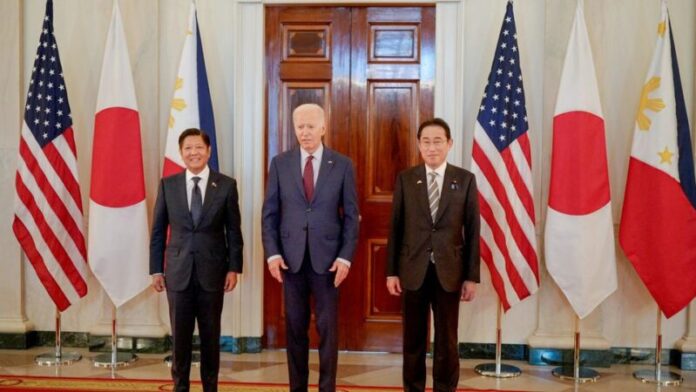
-
The Philippines is looking at generating around $100 billion in investments from the US and Japan in the next five to 10 years as a result of the historic trilateral meeting between the three countries
-
The three countries also launched the Luzon Economic Corridor, which will support connectivity between Subic Bay, Clark, Manila, and Batangas
-
The three countries also intend to pursue a new semiconductor workforce development initiative to help secure the three nations’ semiconductor supply chains
The Philippine government is looking at generating around $100 billion in investments from the US and Japan in the next five to 10 years as a result of the historic trilateral meeting between the three countries, according to Philippine Ambassador to the US Jose Manuel Romualdez.
“The figures that I have been hearing at, this may sound a little bit expanded in a way, but we’re talking about a hundred billion in investments in the next five to 10 years,” Romualdez said in a press briefing on April 11.
“Our economic managers are putting our country into a situation where we’re opening up our economy especially in energy, which is very important for digital infrastructure, and infrastructure, physical infrastructure as also one of the other aspects of our economic package that we’d like to offer for potential investors,” he added.
Romualdez said the Philippines is also looking at forging a bilateral free trade agreement (FTA) with the US on specific areas, with the renewed interest from both sides to further enhance trade and economic cooperation.
“As I said, the United States is committed itself into looking at the Philippines as a major investment hub for many American companies,” he said.
Aside from a potential FTA with the US, the Philippines is also eyeing similar trade ties with Japan, Romualdez said.
In a joint vision statement, the three countries said the summit was the culmination of decades of partnership and builds on the recent momentum of the three governments’ trilateral efforts. Following the summit, the three countries “intend to further expand trilateral engagements across our governments and to intensify our cooperative efforts across sectors.”
“We are pursuing economic projects that advance our shared objectives: promoting broad-based and sustainable economic growth, and investing in resilient, reliable, and diversified supply chains,” the statement said, adding that they support the continued progress of the Indo-Pacific Economic Framework for Prosperity (IPEF) to advance resilience, sustainability, inclusiveness, economic growth, fairness, and competitiveness.
Luzon Economic Corridor
They also launched on April 11 the Luzon Economic Corridor, which will support connectivity between Subic Bay, Clark, Manila, and Batangas.
Through this corridor, part of the Partnership for Global Infrastructure and Investment-IPEF Accelerator, Japan, the Philippines, and the US commit to accelerating coordinated investments in high-impact infrastructure projects, including rail; ports modernization; clean energy and semiconductor supply chains and deployments; agribusiness; and civilian port upgrades at Subic Bay.
Japan has long been supporting connectivity in this area, including rails and roads, through the Japan International Cooperation Agency.
“We plan to work with multilateral organizations and the private sector to attract quality, transformative investments,” the statement said.
The US, subject to Congressional notification, and Japan, with support from Japanese industry, intend to provide at least $8 million for Open Radio Access Network (RAN) field trials and the Asia Open RAN Academy based in Manila, to enable future commercial deployment and an open, interoperable, secure, reliable, and trusted information communications technology ecosystem in the Philippines.
The three countries also intend to pursue a new semiconductor workforce development initiative, through which students from the Philippines will receive world-class training at leading American and Japanese universities, to help secure the three nations’ semiconductor supply chains.




